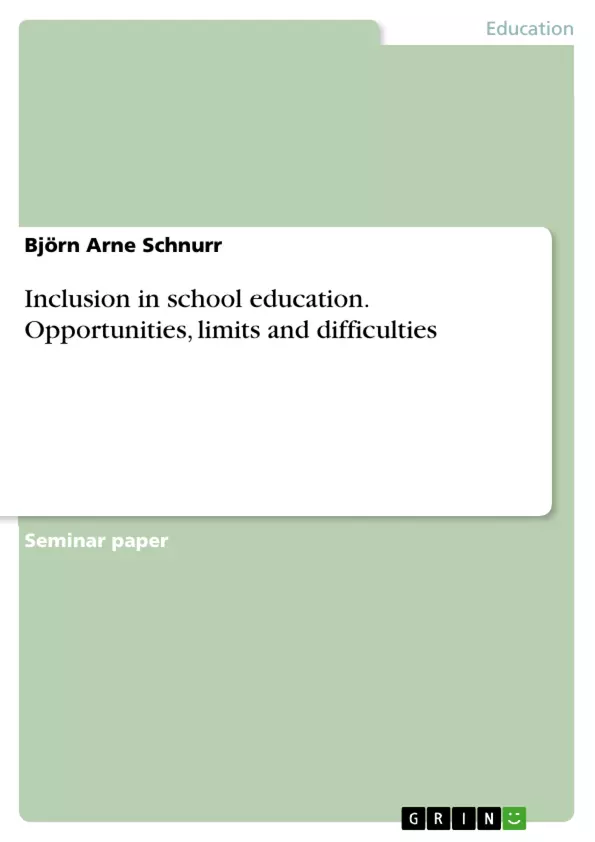Under the UN Convention on the Rights of Persons with Disabilities, Germany has committed itself to granting all students, including those with mental and physical disabilities, access to all general educational institutions. This thesis wants to show which chances but also difficulties, limits and problems inclusion represents.
In order to create a better understanding, inclusion is defined and described how it differs from integration. The chapter concludes with an outline of inclusion in school education in Germany.
In the next chapter, the opportunities of inclusion are presented. It is divided into the categories of "opportunities for students," "opportunities for the institution school," and "opportunities for society" to provide a better overview and a more nuanced view. Afterwards, the limitations, risks and difficulties of inclusion will be highlighted. Finally, possibilities will be shown how inclusion can succeed.
Inhaltsverzeichnis (Table of Contents)
- Introduction.
- What is inclusion..
- Definition of exclusion..
- Definition of integration..
- Definition of inclusion
- Differences in inclusion/integration
- Inclusion in school education...
- Opportunities for inclusion….
- Opportunities for pupils
- Opportunities for the institution of schools..
- Opportunities for society....
- Limits, risks and difficulties of inclusion..
- Limits, risks and difficulties for pupils
- Limits, risks and difficulties for the institution school..
- Limits, risks and difficulties for society..
- How can inclusion succeed?
- Final consideration
Zielsetzung und Themenschwerpunkte (Objectives and Key Themes)
This work aims to analyze the opportunities, difficulties, limits and problems of providing inclusive school education for all pupils, including those with mental and physical disabilities, as mandated by the UN Convention on the Rights of Persons with Disabilities.
- Definition and conceptualization of inclusion in contrast to exclusion and integration
- Opportunities of inclusion for pupils, schools, and society
- Limits, risks, and difficulties of inclusion for pupils, schools, and society
- Strategies for successful inclusion
- The importance of inclusion as a human rights issue and its implications for education
Zusammenfassung der Kapitel (Chapter Summaries)
The introduction provides a concise overview of the work's scope and purpose, highlighting the focus on inclusion in school education as defined by the UN Convention on the Rights of Persons with Disabilities. Chapter 2 delves into the definition of inclusion, comparing it to exclusion and integration, and outlining the historical and conceptual development of inclusive education. Chapter 3 explores the opportunities that inclusion offers, examining its benefits for pupils, schools, and society as a whole. Chapter 4 focuses on the limitations, risks, and difficulties that may arise in implementing inclusive education, analyzing these challenges for pupils, schools, and society.
Schlüsselwörter (Keywords)
The central keywords and focus topics of this work include inclusion, exclusion, integration, school education, disability, UN Convention on the Rights of Persons with Disabilities, human rights, opportunities, limits, difficulties, and strategies for successful implementation of inclusive education.
- Quote paper
- Bachelor of Science Björn Arne Schnurr (Author), 2017, Inclusion in school education. Opportunities, limits and difficulties, Munich, GRIN Verlag, https://www.grin.com/document/1176823



